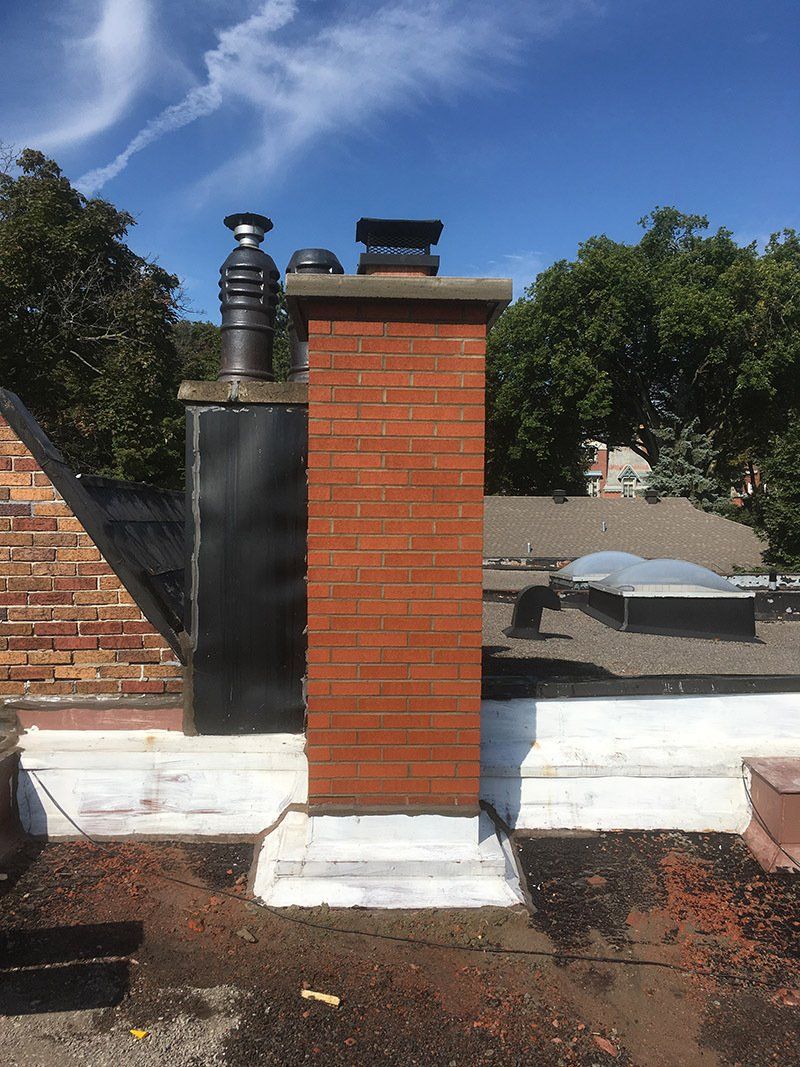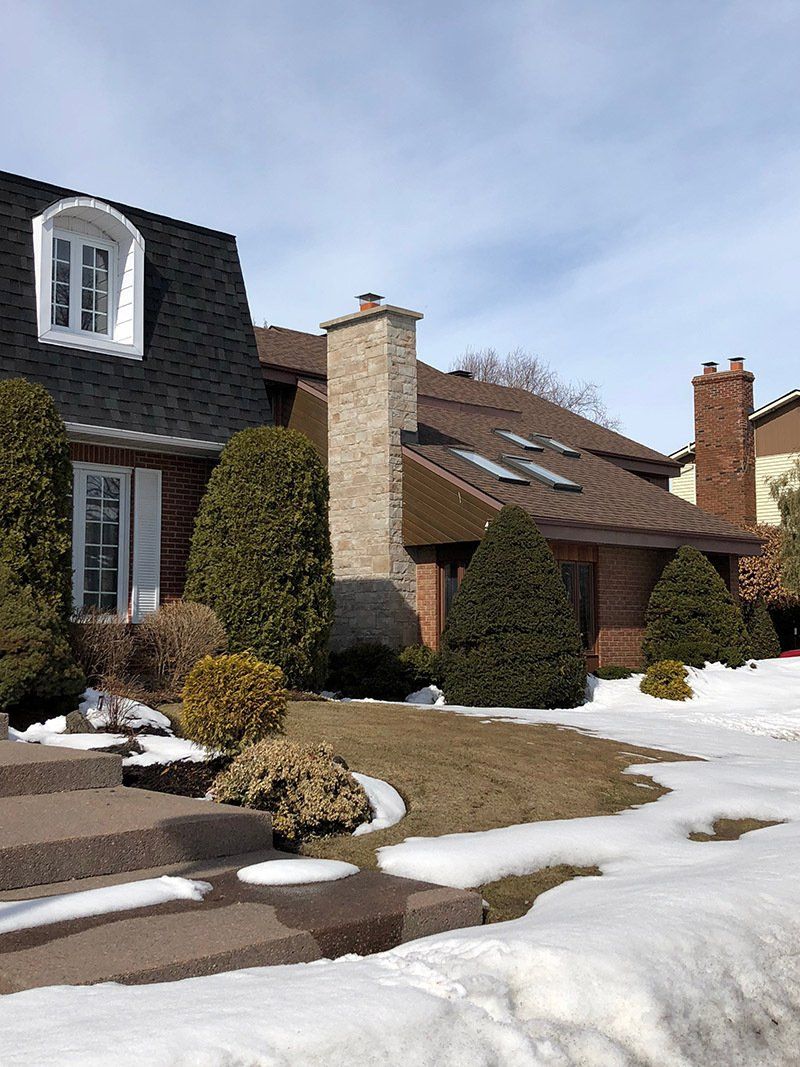FREQUENT MASONRY PROBLEMS
DAMAGED CHIMNEY
CAUSES
The chimney head is subject to weather and temperature changes. Over time, a crack in the chimney cap may occur. Not being protected, the water infiltrates and the moisture remains trapped in the chimney, which causes the bricks to burst.
CONSEQUENCES
The brick of the chimney crumbles, jeopardizing its structure.
SOLUTION
Destroy the upper part of the chimney (the head) up to the roof or parapet and rebuild the latter with a 4-inch concrete cap provided with a drip tray and galvanized frame.
TO NOTE
It is important to check that the chimney cap is not cracked, and to make sure that a drip line is present.






